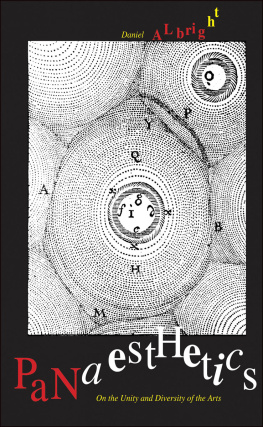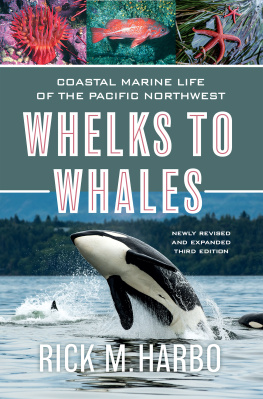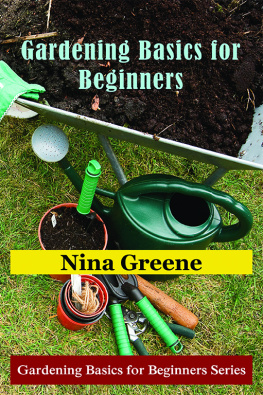COASTAL GARDENING in the PACIFIC NORTHWEST

COASTAL GARDENING in the PACIFIC NORTHWEST
From Northern California to
British Columbia

CARLA ALBRIGHT

Copyright 2007 by Carla Albright
First Taylor Trade Publishing edition 2007
This Taylor Trade Publishing paperback edition of Coastal Gardening in the Pacific Northwest is an original publication. It is published by arrangement with the author.
All rights reserved. No part of this book may be reproduced in any form or by any electronic or mechanical means, including information storage and retrieval systems, without written permission from the publisher, except by a reviewer who may quote passages in a review.
Published by Taylor Trade Publishing
An imprint of The Rowman & Littlefield Publishing Group, Inc.
4501 Forbes Boulevard, Suite 200, Lanham, Maryland 20706
Distributed by NATIONAL BOOK NETWORK
Library of Congress Cataloging-in-Publication Data
Albright, Carla.
Coastal gardening in the Pacific Northwest : from Northern California to British Columbia / Carla Albright. 1st Taylor Trade Publishing ed.
p. cm.
ISBN-13: 978-1-58979-317-0 (paper: alk. paper)
1. Seaside gardeningNorthwest, Pacific. 2. Coastal plantsNorthwest, Pacific. 3. Seaside gardeningCalifornia, Northern. 4. Coastal plantsCalifornia, Northern. I. Title.
SB460.A43 2007
635.9'51795dc22
2006032030
 The paper used in this publication meets the minimum requirements of American National Standard for Information SciencesPermanence of Paper for Printed Library Materials, ANSI/NISO Z39.48-1992.
The paper used in this publication meets the minimum requirements of American National Standard for Information SciencesPermanence of Paper for Printed Library Materials, ANSI/NISO Z39.48-1992.
Manufactured in the United States of America.
To:
Gary, Gene, and Rebecca,
Hobart, Levee, Mandy, Joanne and Gert.
My family, two- and four-legged.

CONTENTS

ACKNOWLEDGMENTS
I WOULD BE REMISS if I did not start by thanking my dear mother for teaching me the difference between a weed and a portulaca. And how wonderful it is to eat a tomato out of the garden. Working beside her in her little rock garden are some of my fondest memories of growing up. Now in my own garden, I often ask myself, What would my mother have done here? Gone too soon, I still miss her every day.
My gardening friends over the years have also inspired me. Betty, the British gardener, Marlene, the German gardener, and Dena, the American one, have all contributed to my love of gardening in ways they probably dont realize. Not to mention the Tillamook County master gardeners Sheila, Cris, Sally, Patty, Betsy, Evelynn, Janet, Jane, Mary, and Deborah, as well as all the others who have in their own ways encouraged me to write this book. Some were also generous enough to allow me to photograph their gardens and give me ideas to include. I thank you, ladies, all.
I also send a large thank you to Maggie MacLaren, professional garden photographerand dear friendwho has given me permission to use one of her photographs on the cover. Maggie is one of those gardeners who are relatively new to the concept of a coastal garden, having relocated recently to Vancouver Island. Her generosity overwhelms me.
To my editor, Dulcie Wilcox, I owe a tremendous debt of gratitude. Dulcie saw potential in this book and encouraged me to run with it. For her countless hours of supportand editingI thank her.
And lastly, but most importantly, I would like to thank my family: My dear husband of 36 years, Gary, who has always been my biggest fan and who first saw my writing capabilities and encouraged me to think about writing a book. And thank you to my son, Eugene, and our daughter-in-love, his dear wife, Rebecca, as they add such joy, encouragement, and humor to my life. I would not have attempted such a daunting task had I not had all of their love and support. The words have not yet been created that will fully express my love and gratitude to you all.

INTRODUCTION
WHEN I MOVED to the north Oregon coast a few years ago, I was an experienced Zone 5 gardener. I was used to snowy, often frigid winters and hot, humid summers. My garden included mostly roses, herbs, perennials, and a few annuals. It was a good gardening climate but a short one. The days were hot enough and the summer long enough that the vegetable patch included tomatoes, corn, and, of course, the omnipresent zucchini.
But our son relocated to the Portland areafar away from western Pennsylvania where I had lived most of my life. Time for a change. Time to move to the coast.
Imagine my thrill to learn I was now living in a Zone 8. So many more plants and a much longer growing season. I went from gardening from May through September to gardening from late February through October and, in a good year, into November. But that longer growing season also came with strong winds, sandy soil, and salt spray. I needed some help to learn what I couldand couldntsuccessfully grow here.
Enter the Master Gardener program. I had been a master gardener in the east through the Penn State University Extension Service and had chosen an Oregon county to live in that also had a Master Gardener program, this time through Oregon State University Extension Service. I took the training classes the first winter here, knowing I would learn specifics about coastal gardening. And I did.
In the following chapters, you will hear me refer to your local extension office quite often. Perhaps a bit of background is in order. In the United States, each individual state has what is called a land-grant college. These are generally the agriculture schools for the states, and are usually called Penn State, Oregon State, Washington State, and so on. Each of these land-grant colleges maintain county extension offices that address questions and concerns from the agricultural community. The 4-H program is one of the extensions most visible projects. In the late 1970s, Washington State Universitys extension offices were finding themselves inundated with questions from home gardeners. One of their extension agents came up with the idea of training volunteers to answer those questions so that the agent could be available for the local commercial farmers instead of the local hobby gardeners. Thus began the Master Gardener training program. There are now master gardeners in every state nationwide and in the Canadian provinces as well. All master gardeners go through an extensive training program for home horticulture in exchange for donating hours of service to their respective communities. This was the training I underwent in both Pennsylvania and Oregon.
I also needed some supplemental help with specifics and looked for books on Pacific Northwest coastal gardening. I found a few plant lists and a great book on native plants, but not much else. The books for coastal North and South Carolina werent relevant to the cool damp climate we have here. When I found other gardeners new to the area also expressing frustration in finding localized information, I thought I should compile what I had learned as a master gardener with the additional information I had culled from various sources for my own use. I added photographs I had taken from my own gardens as well as those of my friends, and before I realized it, I had written a book on coastal gardening for the Pacific Northwest.
Next page












 The paper used in this publication meets the minimum requirements of American National Standard for Information SciencesPermanence of Paper for Printed Library Materials, ANSI/NISO Z39.48-1992.
The paper used in this publication meets the minimum requirements of American National Standard for Information SciencesPermanence of Paper for Printed Library Materials, ANSI/NISO Z39.48-1992.

